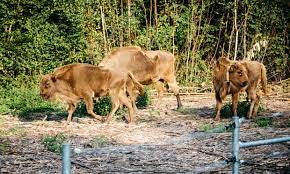Albania
Albania is relatively small country in Southern Europe – bordering Greece. Despite lying behind the iron curtain, like other countries in this area although predators survived, they are greatly depleted. There are 250 wolves within the borders, 1800-200 bears. Unfortunately, the Lynx in Albania is a subspecies called the Balkan Lynx, and there are only30-45 spread between Albania and North Macedonia.
Unfortunately, when you look at the size of the country, and the fact that 70% of it is covered by the Albanian Alps, you realize that here to the wildlife numbers are greatly depleted. The Dinirac Alps continue on from the Julian Alps which continue from the main alps range. Only the most northern part of Albania contains these mountains.
Albania does pay compensation for livestock killed, which should make this a country which is more open to ecotourism. Should an ecotourism industry grow bigger in this country, it would hopefully reduce both legal and illegal killing of these animals, and therefore allow the populations to rebound.
Look below the news section to see any further links
AlbaniaNews
Predator recovery across Europe – Part 3 – Lynx
- Tim
- March 25, 2018
What is clear, is that interest in the wolves and bears amongst tourists is likely to encourage ecotourism to become an industry in Albania. This country has suffered greatly over the last half a century or more, however, as a result many animals have survived alongside them – tourism will show them what this is worth.
Bison have not yet got any presence in the country.
Links to areas to visit will appear on this page

